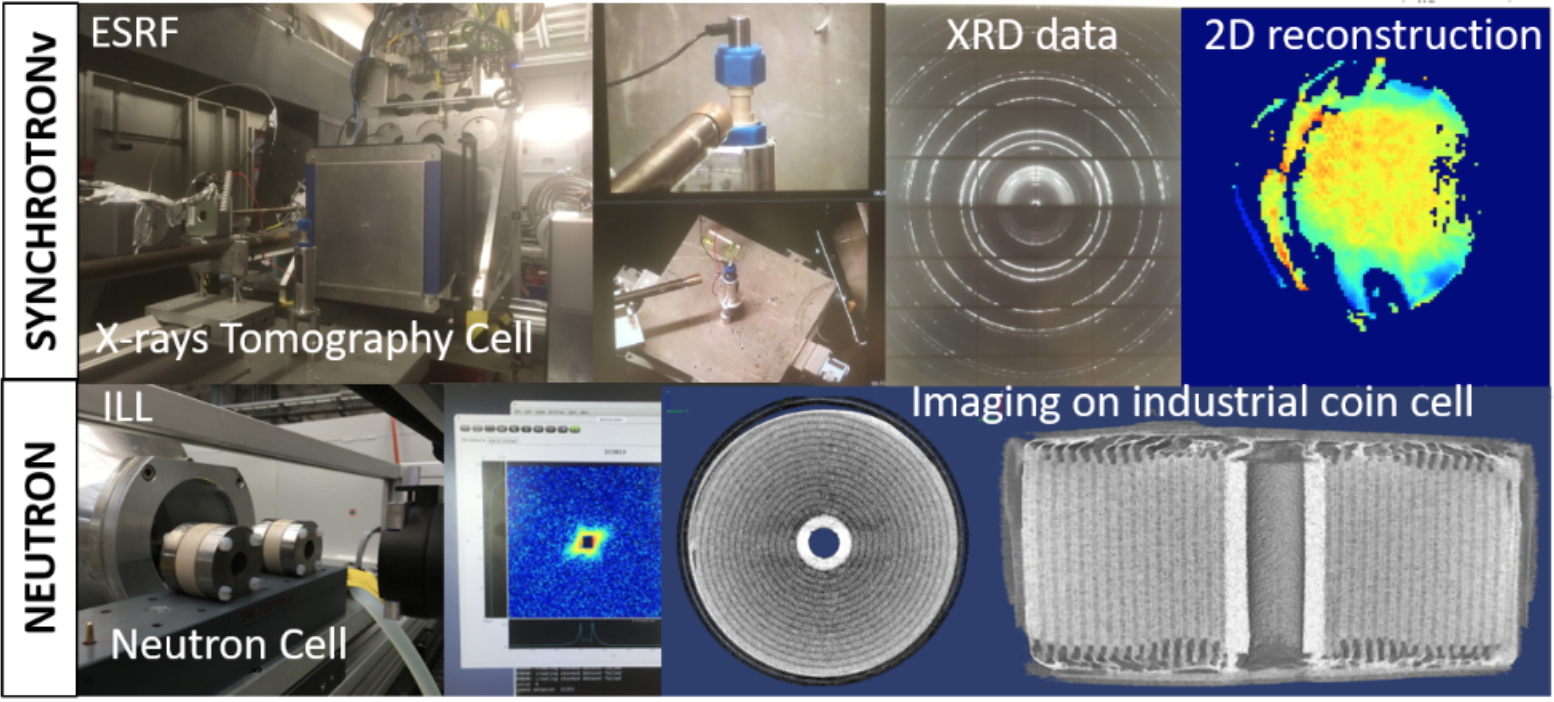Summary
The
in situ characterization of battery materials is needed to help designing safer and more efficient electrochemical devices. In particular, following in real-time the lithiation and ageing mechanisms require to use advanced non-destructive tools capable to probe the system during cycling. In this regard, synchrotron and neutron techniques provide unique capabilities to access the chemical, morphological and structural changes inside the electrodes and electrolytes at the relevant length scales, from molecular level to nano-, meso and micro-scales. In our team, we focus on developing advanced methodologies to probe in real-time different types of Li-ion batteries, for instance silicon-based anodes or solid-state electrolytes. The aim of the internship will be to perform some experiments at the European facilities ESRF and/or ILL and analyze the data, with particular focus on tomography/imaging techniques to obtain the 3D morphology and structure.
 Full description of the subject
Full description of the subject Efficient, safe, and environmentally-friendly energy storage is a key requirement to successfully transitioning from depleting fossil fuels to renewable energy sources. In this regard, lithium-based batteries are playing a decisive role, particularly in meeting the demands of a highly mobile society. Nevertheless, there are great challenges remaining towards the worldwide success of battery-powered electric vehicles, which mostly revolve around the safety and energy density of the battery. These issues require in-depth understanding of lithiation/delithiation mechanisms and ageing process, in order to develop new materials such as silicon-based anodes (promising due to the theoretical capacity of Silicon, ten times higher than the commonly used Graphite) and solid state electrolytes (envisioned to replace the commonly employed liquid organic electrolytes which are highly flammable and release toxic degradation products).
The morphology of the battery components (electrodes, electrolyte and their interfaces) may be subjected to major, irreversible changes during successive charge/discharge cycles, leading to ageing (capacity fading) and ultimate failure of the system. Although post-mortem examination of the materials at various states of (dis)charges is invaluable, there is a growing interest in operando methods to continuously diagnose the battery components in the course of device cycling. In this regard, synchrotron and neutron techniques provide unique capabilities to access the chemical, morphological and structural changes inside the electrodes and electrolytes at the relevant lengthscales, from molecular level to nano-, meso and micro-scales. In our team, we focus on developing advanced methodologies to probe in real-time different types of Li-ion batteries. The aim of the internship will be to perform some experiments at the European synchrotron (ESRF) and/or the European neutron reactor (ILL) and analyze the obtained sets of data (as well as already acquired data), with particular focus on tomography/imaging techniques to reconstruct the 3D morphology and structure.
Depending on the schedule of the Large Scale Facilities experiments, we will investigate potentially different types of materials,
e.g. nanostructured Silicon-based electrodes
[1,2] and/or solid state electrolytes made of polymers or hybrid organic/inorganic materials. The materials will be provided by industrials partners in the frame of European projects or available internally at CEA. The techniques we plan to use are:
• Operando Synchrotron Tomography (absorption and WAXS/SAXS, @ESRF).
These experiments allow the development of key material properties to be reconstructed in 3D with sufficient spatio-temporal resolution (tens of microns). They provide the needed understanding of the physical and chemical relations between the material components and how these relations affect the final performance of the device. This combination of high-energy X-ray techniques, together with advanced data analysis approaches, will be used to characterize the materials at the atomic- and nano-scale (up 100 nm) levels without compromising the battery operation.
• Neutron imaging (@ ILL).
Imaging of operando batteries with neutrons is powerful as the lithium is strongly absorbing neutrons, therefore mapping of heterogeneities can be obtained with good resolution in thin layers (electrodes/electrolytes), as well as checking the possible growth of dendrites and problems of lithium plating.
Requested skillsA background in condensed matter, physics and/or scattering techniques, including, possibly, skills or interest in data analysis, will be important. Interest in energy storage devices and li-ion batteries will be appreciated.
Keywords Li-ion batteries; ageing; lithiation mechanism; synchrotron; tomography; 3D morphology; microstructure
ContactsSandrine Lyonnard - Phone: 04 38 78 92 86
Samuel Tardif